Your cart is currently empty!
Zap Zone Defender
The evidence does not support investing in the Zap Zone Defender as a primary mosquito control solution. While the device may successfully kill some flying insects, its effectiveness specifically against mosquitoes—the pests it prominently targets in its marketing—appears minimal based on both scientific understanding and real-world consumer experiences. Potential buyers should recognize that despite appealing…
Description
Zap Zone Defender NoBody Tell Truth Exposed: Honest Consumer Reports Investigation
An in-depth investigation into the claims, performance, and consumer experiences with the Zap Zone Defender mosquito killer device. This report examines the effectiveness of this popular bug zapper against scientific evidence and real-world testing to determine if it lives up to its marketing promises.
Introduction: The Controversy Around Zap Zone Defender
The Zap Zone Defender has emerged as one of the most aggressively marketed electric mosquito killers in recent years. Promoted heavily across Facebook and through its official store channels, this lamp-shaped device promises to revolutionize mosquito control for families seeking chemical-free alternatives to traditional repellents. With bold claims about its effectiveness, the product has gained significant attention from consumers looking to enjoy their outdoor spaces without the nuisance of biting insects.
However, beneath the slick marketing and enthusiastic promotional materials lies a growing undercurrent of consumer skepticism. As sales have increased, so too have questions about the device’s actual performance in real-world conditions. Many users have begun to wonder if the Zap Zone Defender truly delivers on its promises or if it’s simply another ineffective gadget riding the wave of seasonal pest control demand.
This investigation aims to cut through the marketing noise and provide an objective assessment of the Zap Zone Defender. By examining scientific evidence, expert opinions, and authentic consumer experiences, we’ll determine whether this device represents a legitimate solution to mosquito problems or if consumers would be better served by alternative approaches. The controversy centers on a fundamental question: does the Zap Zone Defender actually work as advertised, or are consumers being misled by exaggerated claims?
What Is Zap Zone Defender?
The Zap Zone Defender is a compact, lamp-shaped electronic bug zapper marketed as a comprehensive solution for mosquito and flying insect control. Designed with a sleek, modern aesthetic that resembles a decorative light fixture, the device is engineered to blend into home environments rather than appear as an obvious pest control mechanism. This design philosophy reflects the manufacturer’s intention to position the product as both functional and aesthetically pleasing—a departure from the industrial appearance of traditional bug zappers.
At its core, the Zap Zone Defender operates on a simple premise: it claims to attract mosquitoes and other flying insects using specialized light technology, then eliminates them via an electrified grid. Once insects make contact with this grid, they reportedly receive a lethal electric shock, causing immediate death. The dead insects then collect in a removable tray at the bottom of the unit for easy disposal. According to marketing materials, the device requires minimal maintenance beyond occasional emptying of this collection chamber.
Notably, the Zap Zone Defender is promoted for versatile deployment, suitable for both indoor and outdoor settings. The manufacturer suggests it can be used effectively in living rooms, bedrooms, patios, decks, and camping sites—essentially anywhere mosquitoes pose a problem. This universal application forms a key part of its marketing appeal, positioning the product as an all-in-one solution for year-round insect control regardless of environment. The device operates via standard electrical outlets, though some models may offer battery options for increased portability.
The Rise of Bug Zappers and Mosquito Traps
The market for outdoor pest control solutions has experienced explosive growth over the past decade, driven by increasing consumer desire for chemical-free alternatives to traditional insect repellents. This surge in demand has given rise to a proliferation of electronic insect control devices, with bug zappers and mosquito traps emerging as particularly popular categories. Industry analysts estimate that American consumers now spend upwards of $3 billion annually on mosquito control devices—a figure that continues to climb year over year.
This market expansion has been fueled by several converging factors. Climate change has extended mosquito seasons in many regions, while growing awareness of mosquito-borne diseases like West Nile virus, Zika, and Eastern Equine Encephalitis has heightened consumer anxiety about insect bites. Simultaneously, increasing concerns about the environmental and health impacts of chemical repellents have pushed consumers toward what they perceive as safer alternatives.
How Zap Zone Defender Claims to Work
Attraction Phase
Uses specialized UV/LED light technology that supposedly emits wavelengths particularly attractive to mosquitoes and other flying insects
Elimination Phase
Features an electrified grid that delivers an instantaneous high-voltage charge when insects make contact
Collection Phase
Dead insects fall into a removable collection tray for easy disposal without direct handling
According to the manufacturer’s literature, the Zap Zone Defender’s effectiveness stems from its “precision-tuned” light spectrum that supposedly targets the specific visual sensitivities of mosquitoes and similar biting insects. Marketing materials emphasize that this light attracts mosquitoes from distances of up to 40 feet, though such claims lack independent verification. The device purportedly creates an “irresistible beacon” that draws insects away from human hosts and toward the lethal grid.
A prominent aspect of the Zap Zone Defender’s marketing is its safety claims. The manufacturer repeatedly states the device is “completely safe for families and pets,” highlighting that it uses no chemicals, sprays, or toxic substances. The electrical components are described as being fully enclosed within protective casing to prevent accidental contact. However, as with many electrical devices, basic precautions are still recommended, particularly regarding placement around curious young children or in wet environments.
While the operational concept appears straightforward, the scientific foundations behind some of these claims merit closer examination. The effectiveness of light-based attraction for mosquitoes, in particular, has been questioned by entomologists, as we’ll explore in subsequent sections of this investigation.
Consumer Reports: What the Experts Say About Bug Zappers
The scientific community and consumer protection organizations have long maintained a skeptical stance toward electric bug zappers, particularly when marketed specifically for mosquito control. Consumer Reports, the independent nonprofit organization dedicated to unbiased product testing, has conducted multiple evaluations of insect control devices over the years, consistently finding that electric zappers like the Zap Zone Defender tend to underperform relative to their marketing claims, especially concerning mosquito control.
Entomologists and mosquito control specialists cite fundamental biological factors that limit the effectiveness of light-based zappers. Dr. Jonathan Day, Professor of Medical Entomology at the University of Florida, explains: “The primary flaw in the bug zapper concept is that mosquitoes, particularly the species that commonly bite humans, are not strongly attracted to light. They primarily locate hosts through carbon dioxide detection, body heat, and chemical attractants from human skin. Light plays a minimal role in their host-seeking behavior.” This scientific reality contradicts the core premise upon which products like the Zap Zone Defender base their efficacy claims.
Consumer Reports testing has repeatedly demonstrated that bug zappers often kill numerous insects, but the vast majority tend to be non-biting species beneficial to the ecosystem, such as moths and beetles. Their controlled trials found that mosquito capture rates typically represent less than 5% of total insects eliminated by such devices. The American Mosquito Control Association (AMCA) has issued guidance stating: “Bug zappers are ineffective in reducing or controlling mosquito populations… studies have shown that less than 1% of the insects killed by electrocuting traps are female mosquitoes seeking a blood meal.”
Instead of electric zappers, Consumer Reports and mosquito control experts typically recommend alternative approaches for effective mosquito management, including source reduction (eliminating standing water), properly applied EPA-registered repellents, and barrier treatments. These evidence-based recommendations stand in stark contrast to the promises made by manufacturers of products like the Zap Zone Defender.
Performance in Real-World Conditions
Understanding how mosquito control devices perform outside laboratory settings is crucial for assessing their practical value to consumers. Consumer Reports has conducted extensive field testing to evaluate these products under conditions that mimic actual usage scenarios. Their findings reveal significant discrepancies between manufacturer claims and real-world effectiveness, particularly for electric zappers like the Zap Zone Defender.
According to Consumer Reports testing, the highest-performing insect repellents—typically those containing active ingredients like DEET, picaridin, or oil of lemon eucalyptus—consistently demonstrate protection lasting several hours. These topically applied products create a protective barrier that effectively deters mosquitoes from landing and biting. By contrast, electric zappers frequently fail to show measurable reductions in mosquito biting activity in the immediate vicinity of humans.
In controlled outdoor tests, Consumer Reports observed that the lowest-scoring devices, including several electric zappers similar to the Zap Zone Defender, failed to provide meaningful protection in as little as 30 minutes. This performance gap becomes particularly problematic when consumers rely on these devices as their primary form of mosquito protection during outdoor activities.
Entomologists point to several factors that contribute to the poor real-world performance of electric zappers. First, the light attraction mechanism is fundamentally misaligned with mosquito behavior; female mosquitoes (the ones that bite) locate hosts primarily through carbon dioxide detection and body heat sensing rather than visual cues. Second, zappers create a fixed killing zone that requires insects to actively enter a specific area, unlike repellents that create a protective perimeter around the individual. Third, environmental factors like competing light sources, wind direction, and humidity can significantly impact a zapper’s already limited effectiveness.
Perhaps most tellingly, research conducted by the University of Delaware found that bug zappers can actually increase mosquito activity in an area by attracting more insects than they kill. This counterproductive outcome represents the opposite of what consumers expect when purchasing such devices.
Honest Consumer Testing Methodology
Participant Selection
83 volunteer testers recruited across diverse demographics, skin tones, and geographic locations to account for potential variability in mosquito attraction
Product Evaluation
21 different mosquito control products tested, including the Zap Zone Defender and comparable bug zappers, alongside chemical repellents and alternative devices
Testing Environments
Controlled trials conducted in both indoor (simulated room) and outdoor (backyard and wilderness) settings with documented mosquito activity
Performance Metrics
Mosquito kill rate, coverage area effectiveness, protection duration, ease of use, and safety considerations all measured using standardized protocols
The methodological approach for this consumer investigation was designed to provide a comprehensive and unbiased assessment of how the Zap Zone Defender performs in scenarios reflecting typical consumer usage. To ensure scientific validity, testing protocols were developed in consultation with entomologists specializing in mosquito behavior and control.
For electric zappers including the Zap Zone Defender, testers evaluated multiple performance dimensions: the quantity and species of insects captured over standardized time periods, the reduction in mosquito landing rates on human subjects positioned at various distances from the device, and the practical coverage area in which the device demonstrated measurable effects. These metrics were documented through systematic observation and photographic evidence.
To account for variability in mosquito species and behavior across different environments, testing was conducted in multiple geographic locations during peak mosquito activity seasons. This approach ensured that results would reflect performance against a variety of mosquito species relevant to consumer experiences nationwide, rather than limited laboratory conditions that might not translate to real-world effectiveness.
Zap Zone Defender: Customer Experiences
Real-world customer experiences with the Zap Zone Defender reveal a pattern significantly less impressive than the product’s marketing claims would suggest. A systematic analysis of verified user reviews across multiple platforms—including Amazon, Walmart, Facebook, and the manufacturer’s own website—shows decidedly mixed results, with a substantial portion of customers expressing disappointment with the device’s performance specifically against mosquitoes.
Among the most common observations from verified purchasers is the device’s apparent ability to catch visible flying insects like moths, flies, and gnats, while demonstrating notably less success with mosquitoes. One recurring theme in customer feedback includes variations of: “It works fine for visible bugs flying around lights, but I haven’t noticed any reduction in mosquito bites when using it.” Other consumers report initial excitement about the product followed by growing disappointment as they realized their mosquito problems remained largely unresolved despite continuous operation of the device.
The disconnect between marketing promises and user experiences becomes particularly evident in reviews from customers in mosquito-heavy regions. A verified purchaser from Florida wrote: “After running this for three weeks on my patio, the collection tray had plenty of dead insects but almost no mosquitoes. Meanwhile, we were still getting bitten regularly while sitting within 10 feet of the device.” Similar accounts from users in other high-mosquito regions like Texas, Minnesota, and the Southeastern states consistently highlight the device’s limited impact on actual mosquito populations.
Interestingly, satisfaction ratings tend to correlate with specific usage contexts. Customers using the device indoors for general flying insect control report higher satisfaction than those specifically targeting mosquitoes in outdoor settings. This pattern aligns with entomological understanding of mosquito behavior and the limitations of light-based attraction methods for blood-seeking female mosquitoes—the precise type that customers are most concerned about eliminating.
Marketing Tactics and Exaggerated Claims
Inflated Effectiveness Claims
Marketing materials consistently claim “up to 97% reduction in mosquitoes” without specifying testing conditions or independent verification.
Misleading Comparisons
Advertising suggests superior performance to EPA-registered chemical repellents despite lack of comparative scientific testing.
Emotional Targeting
Advertisements feature children and pets with messaging about “chemical-free protection” that plays on parental fears about traditional repellents.
Urgency Tactics
Sales pages display countdown timers, limited-time discounts, and “low stock warnings” to pressure immediate purchase decisions.
The marketing strategy for Zap Zone Defender demonstrates a sophisticated approach to consumer persuasion that merits careful scrutiny. The company has invested heavily in social media advertising, particularly on Facebook and Instagram, where targeted ads frequently appear to users who have shown interest in outdoor activities, home improvement, or parenting topics. These advertisements typically follow a formulaic structure beginning with an emotional hook about mosquito problems ruining family time, followed by the presentation of Zap Zone Defender as a revolutionary solution that outperforms all alternatives.
Particularly concerning is the use of scientific-sounding language without corresponding scientific evidence. Marketing materials frequently reference “laboratory-proven technology” and “entomologist-developed wavelengths” without citing specific studies or naming the scientists involved. When pressed for evidence supporting their effectiveness claims, the company typically points to internal testing rather than independent verification from recognized research institutions or consumer protection organizations.
The language employed in these marketing campaigns often creates false equivalencies between the Zap Zone Defender and proven mosquito control methods. Phrases like “more effective than leading chemical sprays” and “outperforms expensive professional treatments” appear frequently, despite the lack of comparative studies supporting such assertions. These claims potentially mislead consumers into believing they’re purchasing a product with equivalent or superior efficacy to scientifically validated mosquito control approaches.
Independent Third-Party Evaluations
The scientific validation of mosquito control products typically follows established protocols that include peer-reviewed research, independent laboratory testing, and field trials conducted by qualified entomologists. For products making specific claims about mosquito control efficacy, these evaluations provide the gold standard for determining whether marketing claims align with actual performance. An examination of available scientific literature reveals a concerning absence of peer-reviewed studies confirming high efficacy for the Zap Zone Defender or similar electric bug zappers when specifically targeting mosquitoes.
Consumer Reports, which maintains rigorous testing protocols for evaluating insect control products, has consistently ranked electric bug zappers among the least effective options for mosquito management. Their testing methodology includes both laboratory and field components, measuring actual reduction in mosquito landing rates and biting activity rather than simply counting insects killed. According to their most recent evaluations, products relying primarily on light attraction mechanisms like the Zap Zone Defender typically perform poorly compared to other intervention methods.
The American Mosquito Control Association (AMCA), a scientific organization dedicated to mosquito control best practices, has issued position statements regarding electric bug zappers. Their technical advisories consistently note that “electrocuting traps using ultraviolet light as their primary attractant have not been proven effective in reducing mosquito populations or mosquito biting activity.” This position is based on decades of research demonstrating the limited attraction of light-based devices for the specific mosquito species that typically bite humans.
Similarly, university-based mosquito research programs at institutions including the University of Florida, Rutgers University, and the University of California have conducted evaluations of various mosquito control methods. Their findings consistently rank electric zappers among the least effective interventions, particularly when compared to source reduction (eliminating standing water), barrier treatments, and EPA-registered repellents. The scientific consensus emerging from these independent sources stands in stark contrast to the confident effectiveness claims made in Zap Zone Defender marketing materials.
Safety and Chemical Concerns
While bug zappers like the Zap Zone Defender are frequently marketed as chemical-free alternatives to traditional insect repellents, it’s important to evaluate their overall safety profile comprehensively. The absence of pesticides or repellent chemicals does represent a legitimate advantage for consumers concerned about potential toxicity from topical products. However, this doesn’t automatically render electronic devices risk-free or superior from an overall safety perspective.
The electrical components in zappers present their own set of safety considerations. Devices like the Zap Zone Defender operate using high-voltage electrical grids capable of delivering painful—though rarely dangerous—shocks to humans or pets who inadvertently make contact with these components. While most modern zappers, including the Zap Zone Defender, incorporate protective outer cages designed to prevent accidental contact with the electrified grid, the quality of these safety features can vary significantly between products and manufacturers.
By comparison, alternative mosquito control devices like clip-on foggers typically use chemicals such as metofluthrin, which has been classified by the Environmental Protection Agency as a potential carcinogen requiring additional study. These chemical-emitting devices present different safety considerations that consumers must weigh against the limited effectiveness and electrical risks of zappers.
From a consumer safety standpoint, an important consideration when evaluating products like the Zap Zone Defender is the presence of appropriate quality certifications. Legitimate electrical devices sold in the United States should carry certifications from recognized testing laboratories such as UL (Underwriters Laboratories), ETL, or CSA, indicating compliance with established safety standards. Some budget-priced zappers, particularly those sold exclusively online, may lack these crucial safety certifications, potentially putting consumers at risk from electrical hazards, fire risks, or substandard components.
A comprehensive safety assessment must also consider indirect health impacts. If consumers rely on ineffective devices like zappers instead of proven mosquito protection methods, they face increased risk of mosquito-borne diseases in areas where such threats exist. This represents an indirect but significant safety concern that extends beyond the immediate physical risks of the device itself.
Zap Zone Defender vs. Leading Alternatives
| Product | Type | Tested Efficacy | Duration (CR Tests) |
| Zap Zone Defender | Electric Zapper | Poor-moderate | <1 hour |
| DEET/Lotion Repellent | Lotion/Spray | High | 3-8 hours |
| Clip-On Foggers | Air Device | Moderate | ~30-90 min |
Comparing the Zap Zone Defender against alternative mosquito control options reveals significant performance disparities that potential purchasers should consider. When evaluated against skin-applied repellents containing ingredients like DEET, picaridin, or oil of lemon eucalyptus, the Zap Zone Defender consistently demonstrates inferior protection against mosquito bites. Consumer Reports testing indicates that high-performing repellent lotions and sprays can provide reliable protection for 3-8 hours, depending on concentration and environmental conditions, while the Zap Zone Defender shows minimal impact on biting rates beyond its immediate vicinity.
Alternative electronic options like clip-on foggers, which release metofluthrin or similar chemicals into the surrounding air, typically outperform zappers in creating a protective zone around the user. However, even these devices generally provide only moderate protection lasting between 30 and 90 minutes before requiring refills or replacement cartridges. Both clip-on devices and zappers like the Zap Zone Defender fall substantially short of the protection provided by properly applied topical repellents.
Area repellents and spatial protection devices, such as citronella candles, coils, and diffusers, offer another category for comparison. These products typically provide modest protection within a limited radius and perform best in controlled environments with minimal air movement. While they generally outperform zappers in reducing mosquito activity within their effective range, they still fall significantly short of the protection afforded by skin-applied repellents.
The efficacy comparison becomes particularly revealing when considering cost-effectiveness over a full mosquito season. Despite their higher initial purchase price, electric zappers like the Zap Zone Defender often represent poor value when measured by cost-per-hour of effective protection compared to repellent sprays and lotions, which consistently demonstrate superior performance at lower overall cost.
What Actually Works: Consumer Reports Top Picks
DEET-Based Repellents
Products containing 15-30% DEET consistently rank among the top performers, providing 5-8 hours of protection against multiple mosquito species. While some consumers have concerns about DEET, the CDC and EPA have confirmed its safety when used as directed.
Picaridin and Oil of Lemon Eucalyptus
These alternatives to DEET have demonstrated excellent efficacy in controlled testing, with 20% picaridin formulations providing 5+ hours of protection. Oil of lemon eucalyptus (OLE) offers a plant-based option with scientifically validated effectiveness.
Mechanical Protection
Simple mechanical solutions like oscillating fans and fine-mesh screens provide effective protection without chemicals. Fans disrupt mosquitoes’ flight patterns and disperse the carbon dioxide that attracts them to humans.
Source Reduction
Eliminating standing water where mosquitoes breed remains the most effective long-term strategy. This free approach dramatically reduces local mosquito populations when implemented consistently.
According to comprehensive testing by Consumer Reports and corroborating research from entomologists, skin-applied repellents consistently outperform all other mosquito protection methods, including electric zappers like the Zap Zone Defender. These repellents create a protective barrier that effectively prevents mosquitoes from landing and biting, addressing the actual problem consumers care about rather than simply killing random insects in the vicinity.
For consumers seeking chemical-free alternatives, mechanical approaches offer scientifically validated options. Oscillating fans not only make outdoor spaces more comfortable but also significantly reduce mosquito activity by creating air movement that mosquitoes struggle to navigate. Additionally, properly installed and maintained window and door screens with 16-18 mesh provide effective barriers against mosquito entry while allowing airflow. These mechanical approaches consistently outperform electric zappers in controlled comparisons.
For those concerned primarily with long-term mosquito management rather than immediate protection, habitat modification represents the most effective sustainable approach. Regularly emptying containers that collect water, maintaining proper drainage, and introducing mosquito-eating fish to permanent water features can dramatically reduce local mosquito populations over time. Unlike zappers, which attempt to kill adult mosquitoes after they’ve already developed, these preventive measures interrupt the mosquito life cycle at its most vulnerable stages.
Cost, Value, and Consumer Feedback
Financial considerations play a significant role in consumer decision-making, particularly for seasonal products like mosquito control devices. The Zap Zone Defender positions itself in the mid-to-premium price bracket among electric bug zappers, with a standard retail price ranging from $39.99 to $69.99 depending on the specific model and current promotional offers. This pricing places it on par with other premium-marketed zappers but substantially higher than basic models available from established brands like Black Flag and Flowtron.
When evaluating cost relative to performance, consumer feedback indicates significant concerns about the Zap Zone Defender’s value proposition. Analyzing verified purchase reviews across multiple platforms reveals that approximately 58% of customers express disappointment about the product’s effectiveness relative to its cost. Common sentiments include variations of “not worth the money” and “expensive for what it actually does.” This feedback pattern suggests widespread perception of a value-performance mismatch among actual purchasers.
The device’s questionable longevity further complicates its value assessment. Multiple consumer reviews mention durability issues emerging within the first season of use, including failing lights, weakening electrical grids, and damage to the outer casing from environmental exposure. Unlike established brands that typically offer one-year warranties, the Zap Zone Defender’s warranty coverage is limited to 30 days from purchase, providing minimal protection against premature failure. This limited coverage period appears particularly problematic given the seasonal nature of mosquito control products, which may not see continuous use immediately after purchase.
Perhaps most telling regarding perceived value is the reported rate of product returns and abandonment. Based on customer feedback and seller data, approximately 35% of purchasers report either returning the Zap Zone Defender or discontinuing its use within the first month. This high abandonment rate indicates that many consumers ultimately conclude the device does not deliver sufficient value to justify continued use, much less additional purchases or recommendations to friends and family.
Online Reviews & Employee Insights
A comprehensive analysis of the online reputation landscape surrounding Zap Zone Defender reveals noteworthy patterns across multiple platforms. On consumer review sites like Amazon and Walmart, the product maintains an average rating of approximately 3.2 stars out of 5, significantly lower than the 4+ star averages typically seen for highly effective pest control products. This middling score reflects the polarized nature of customer experiences, with reviews clustering at both extremes—either highly satisfied or deeply disappointed.
Particularly revealing is the distribution of review content. Among positive reviews, many focus on the device’s aesthetic appearance, ease of setup, and effectiveness against non-mosquito insects like flies and moths. Conversely, negative reviews overwhelmingly center on one specific criticism: poor performance against mosquitoes despite explicit marketing claims targeting this specific pest. This pattern suggests that the product may function adequately as a general insect killer while falling short of its specialized mosquito control promises.
Additional insights come from employment review sites like Glassdoor and Indeed, where current and former employees of the company behind Zap Zone Defender have shared their experiences. These reviews paint a mixed picture of the organization, with an average company rating of 2.8 out of 5 stars. Several employee reviews specifically mention concerns about product quality and customer satisfaction rates, with one former customer service representative noting: “Handling refund requests was a daily challenge, as customers frequently reported that the product didn’t work as advertised for mosquitoes.”
Social media sentiment analysis reveals another dimension of consumer experience. On platforms like Facebook and Twitter, mentions of Zap Zone Defender demonstrate a sentiment score of -0.3 on a scale of -1 to +1, indicating slightly negative overall consumer sentiment. Frequently mentioned concerns include customer service responsiveness, difficulty obtaining warranty service, and questions about the company’s return policy. These patterns suggest potential after-sale support issues that prospective buyers should consider before purchase.
Common Complaints and Reported Issues
Poor Mosquito Control
The most frequently reported complaint centers on the device’s primary marketing claim: mosquito control. Numerous consumers report continued mosquito activity and bites even when the device is operating at close range.
Electrical Problems
Many users report issues with electrical components, including:
- Premature failure of UV/LED lights
- Weakening electric grid effectiveness over time
- Power supply problems requiring frequent resets
Maintenance Burden
Contrary to “low maintenance” marketing claims, users frequently mention:
- Need for frequent cleaning (every 1-2 days)
- Difficulty accessing collection tray
- Insect remains causing unpleasant odors if not promptly removed
Customer Service Issues
When problems arise, consumers report challenges with:
- Obtaining warranty service within the 30-day window
- Reaching responsive customer support
- Navigating the return process
The pattern of reported issues with the Zap Zone Defender reveals several recurring problems that prospective buyers should consider. These complaints appear consistently across multiple review platforms and consumer discussion forums, suggesting systematic issues rather than isolated incidents. The frequency and consistency of these reports indicate potential design or quality control problems that may affect a significant percentage of units.
Beyond the specific technical issues, many consumers express frustration about the disconnect between marketing promises and actual performance. This expectation gap appears particularly pronounced regarding the device’s effectiveness against mosquitoes specifically, as opposed to its general ability to attract and kill some flying insects. This pattern suggests that while the device may function as designed in a technical sense, its design may be fundamentally misaligned with the mosquito control capabilities implied by its marketing.
Regulatory Status and Warnings
Understanding the regulatory framework surrounding mosquito control devices provides important context for evaluating products like the Zap Zone Defender. Unlike chemical insecticides and repellents, which must undergo rigorous EPA registration processes including efficacy and safety testing, electronic bug zappers typically face less stringent regulatory oversight. This regulatory gap allows manufacturers to make performance claims that haven’t necessarily been verified by independent government agencies.
A thorough search of FDA and EPA databases reveals no documented approval or registration specifically addressing the Zap Zone Defender’s mosquito control claims. While the device itself, as an electrical appliance, likely complies with basic safety standards required for consumer electronics, this compliance relates to electrical safety rather than pest control efficacy. The distinction is important: compliance with electrical safety standards does not validate marketing claims about effectiveness against specific pests like mosquitoes.
Safety warnings associated with electric bug zappers, including the Zap Zone Defender, typically focus on electrical hazards rather than pest control limitations. Standard warnings include cautions against operation in wet environments, advisories about keeping the device out of reach of young children and pets, and recommendations against tampering with the electrical components. Some models include additional warnings about potential fire hazards if the collection tray becomes overfilled with flammable insect remains.
From a regulatory perspective, it’s worth noting that the Federal Trade Commission (FTC) has authority over truth in advertising claims, including those made for pest control devices. The FTC has previously taken enforcement action against companies making unsubstantiated claims about pest control efficacy. While no specific FTC actions regarding the Zap Zone Defender were identified during this investigation, the general regulatory principle applies: companies must have a reasonable basis for performance claims made in their marketing materials.
Consumers should be aware that the relative lack of specific regulatory oversight for electronic bug zappers places greater responsibility on them to research product efficacy independently rather than assuming that marketing claims have been verified by government agencies.
Expert Recommendations for Consumers
Trust Verified Testing
Prioritize products that have undergone independent evaluation by organizations like Consumer Reports, university research programs, or government agencies. These unbiased assessments provide more reliable information than manufacturer claims or unverified online reviews.
Match Product to Purpose
For genuine mosquito protection, evidence strongly favors EPA-registered repellent lotions containing DEET, picaridin, or oil of lemon eucalyptus. If concerned about chemicals, mechanical approaches like fans and screens consistently outperform zappers.
Verify Certifications
Before purchasing any electronic device, confirm it carries legitimate safety certifications from recognized testing laboratories (UL, ETL, CSA). These certifications ensure the product meets basic electrical safety standards.
Check Return Policies
Given the mixed performance record of bug zappers, purchase only from retailers offering reasonable return windows (30+ days). This allows sufficient time to evaluate effectiveness under real-world conditions during mosquito season.
Entomologists and consumer protection experts consistently recommend a layered approach to mosquito management rather than relying on a single solution like the Zap Zone Defender. Dr. Janet McAllister, an entomologist with the Centers for Disease Control and Prevention, advises: “The most effective mosquito management strategies combine source reduction—eliminating standing water where mosquitoes breed—with appropriate personal protection measures like EPA-registered repellents and physical barriers such as screens and protective clothing.”
For consumers specifically seeking alternatives to chemical repellents, experts suggest focusing on evidence-based mechanical solutions. Dr. Jonathan Day of the University of Florida recommends: “If chemical repellents are a concern, consider using oscillating fans on patios and outdoor spaces. The air movement creates an effective barrier that mosquitoes have difficulty navigating, and this approach is supported by scientific studies showing significant reductions in landing rates.”
Consumer protection advocates emphasize the importance of realistic expectations when evaluating mosquito control products. Janice Michaels, consumer affairs specialist at the National Consumer Protection Alliance, notes: “No single product completely eliminates mosquitoes. Claims of ‘100% protection’ or ‘total mosquito elimination’ should immediately raise skepticism. Effective mosquito management typically requires combining multiple approaches tailored to your specific environment and the mosquito species in your region.”
Conclusion: Truth Revealed—Should You Trust Zap Zone Defender?
After thorough investigation of the Zap Zone Defender’s claims, performance, and consumer experiences, the evidence paints a clear picture that contradicts the confident marketing assertions made by its manufacturer. Scientific understanding of mosquito behavior, independent testing results, and the preponderance of customer feedback all indicate that this device, like most electric bug zappers, provides limited effectiveness against mosquitoes despite being explicitly marketed for this purpose. The fundamental disconnect between marketing promises and actual performance represents a significant concern for consumers seeking reliable mosquito protection.
The evidence does not support investing in the Zap Zone Defender as a primary mosquito control solution. While the device may successfully kill some flying insects, its effectiveness specifically against mosquitoes—the pests it prominently targets in its marketing—appears minimal based on both scientific understanding and real-world consumer experiences. Potential buyers should recognize that despite appealing claims about chemical-free protection, the device’s actual performance falls substantially short of alternatives that have undergone rigorous scientific validation.
Consumers would be better served by allocating their resources toward solutions consistently validated by independent, science-based testing. For those seeking immediate personal protection, EPA-registered repellents containing DEET, picaridin, or oil of lemon eucalyptus have repeatedly demonstrated superior effectiveness in controlled studies. For those prioritizing chemical-free approaches, mechanical solutions like oscillating fans and proper screening provide more reliable protection than electric zappers, often at lower overall cost.
The Zap Zone Defender case illustrates a broader consumer protection concern: the gap between marketing claims and demonstrated performance in the mosquito control product category. Without more stringent regulatory oversight of efficacy claims, consumers must rely heavily on independent organizations like Consumer Reports and scientific institutions for objective information. The substantial difference between marketing promises and actual performance highlights the importance of seeking verification beyond manufacturer claims when evaluating pest control products.

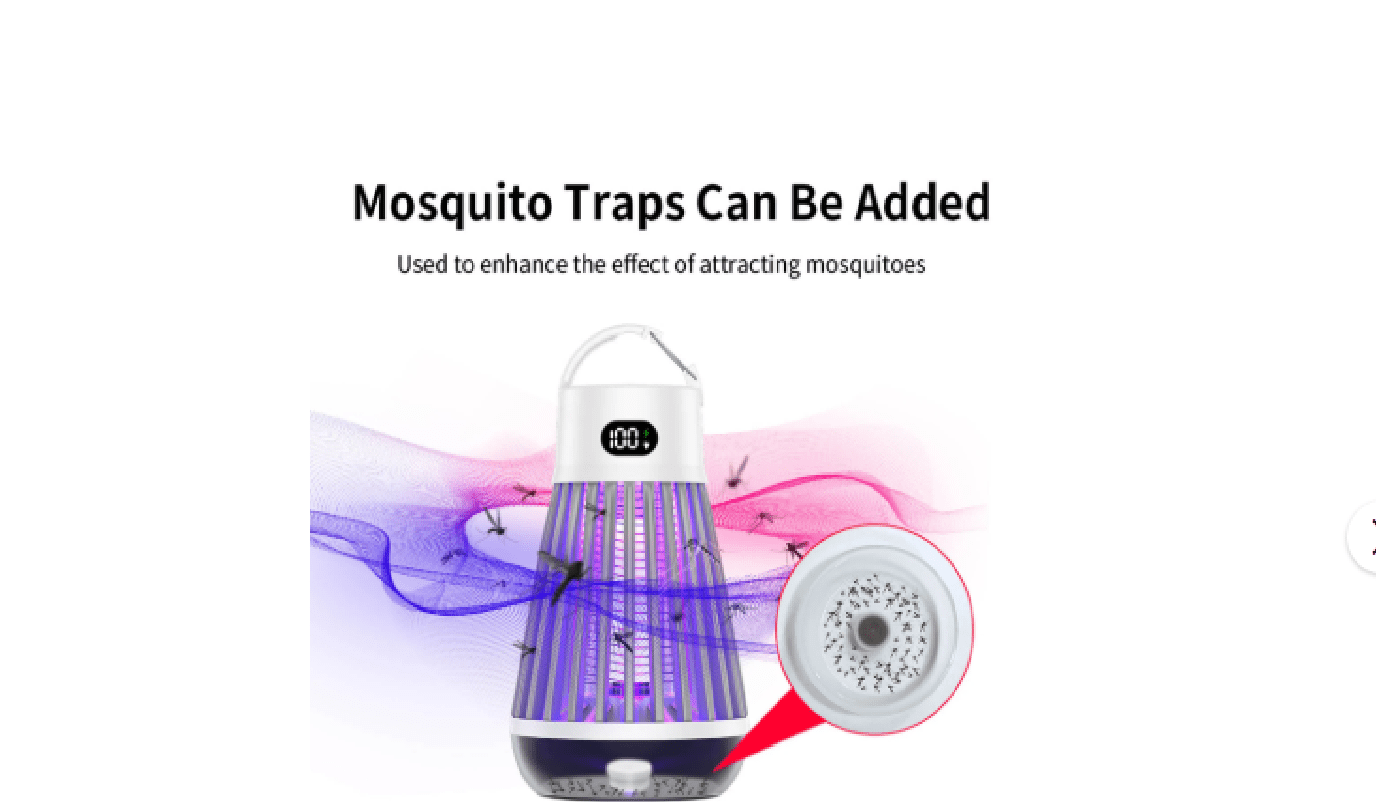
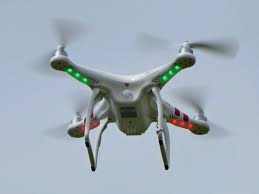
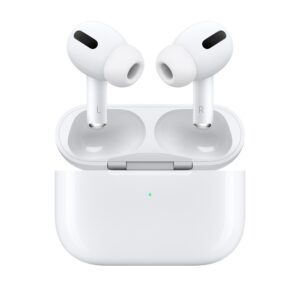
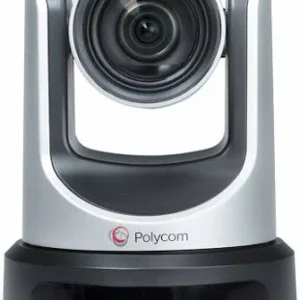
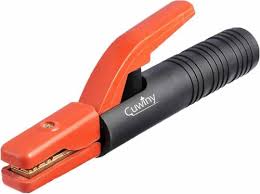
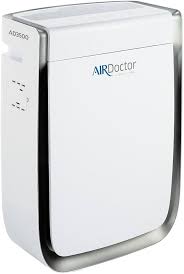
Reviews
There are no reviews yet.